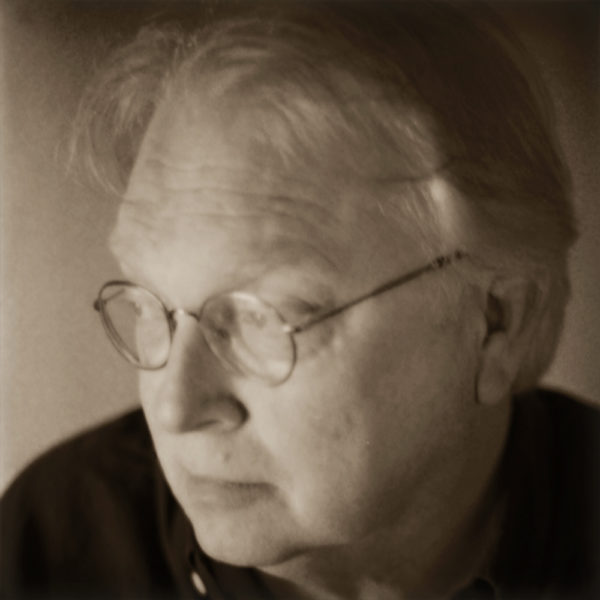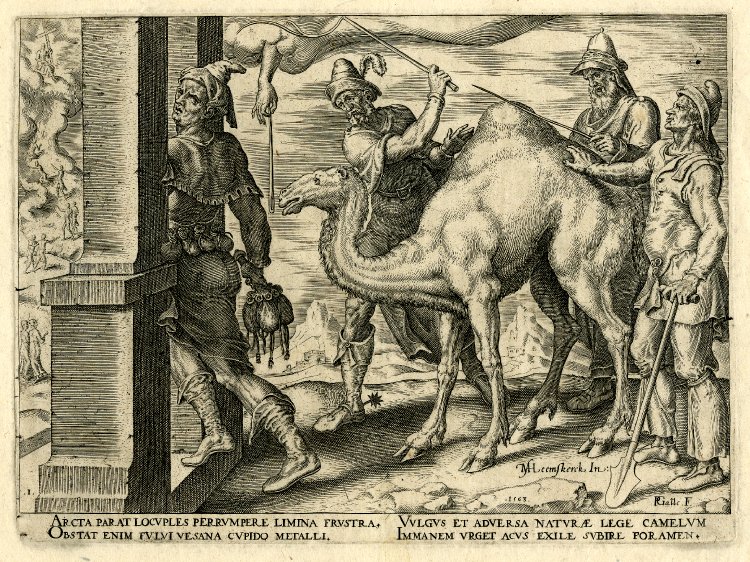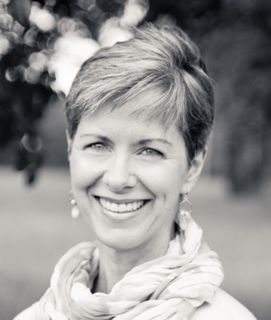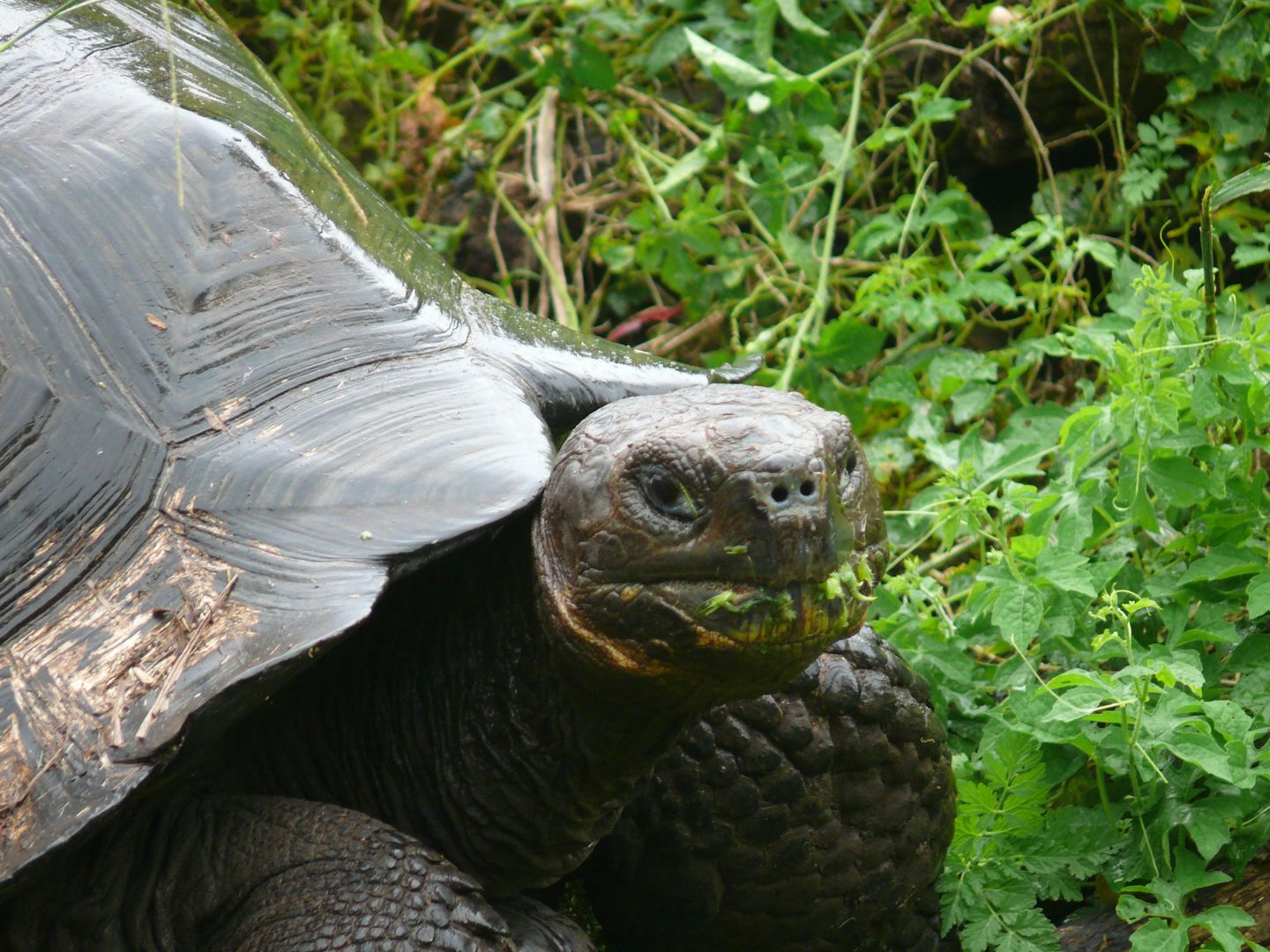Lament was a powerful tool once. The Iliad, perhaps the greatest of the epics of old, ends with three women’s voices mourning Hector, declaring what his death at the hands of Achilles would now mean for each of them. In Hebrew scripture, what was most often lamented was spiritual failure on the part of Israel, the resulting disorder wreaking havoc on the people and land. The prophet Isaiah condemned the wealthy who in a period of economic downturn, rather than helping their fellow Hebrews get back on their feet, bought land cheap from underneath them. They might have come out with riches from taking advantage of others’ money problems, but, in the end, they would be left without friends: “Woe unto them that join house to house, that lay field to field, till there be no place, that they may be placed alone in the midst of the earth!”
To lament was to give voice to the pain and suffering brought on by an injustice or trauma and to grieve the cost to oneself or to the larger community. Recovering a regard for lament, we come face to face, too, with what we have not done that we should have. And maybe there is something we can do better. In my family, I need only look at my own namesake and what he did and did not do. I am named after my father who, in turn, was named after my grandfather’s favorite uncle, a district judge in Waco. I knew of the judge as a reformer, who pushed back against the Red Light district in Waco (the only such legally tolerated then in Texas), the gambling and casinos that then belied the city’s hope to become “the Athens on the Brazos,” and the ruin brought upon marriages, which he saw in divorces sought in his court. All that I’ve read in court transcripts. In 1849, when my grandfather’s Uncle Marshall was born, the country had its twelfth president, Zachary Taylor; Texas had only its second governor, George Thomas Wood; and grandfather’s Uncle Marshall’s father (my grandfather’s grandfather) had a half-dozen or so slaves to make his life easier on a family farm in East Texas. That is also a reality I need to acknowledge.
Away from the farm, too, my Great-Great Uncle Marshall would have been taught that one race, well, his, in fact, was superior to others’. In 1867, my great-great uncle moved to Gilmer, Texas, to be tutored in the law. His instructor was Oran M. Roberts, an unrepentant Confederate, born in South Carolina, schooled in Alabama, who had been a Texas Supreme Court Justice until being removed (temporarily) during Reconstruction. In 1861, Roberts had presided over the Texas state secessionist convention, its call to secede declaring “the debasing doctrine of the equality of all men, irrespective of race or color … in violation of the plainest revelations of the Divine Law.” To put actions to his words, Roberts had then taken up arms as a colonel in the Eleventh Texas (Confederate, that is) Infantry.
As for himself, my great-great uncle never said anything in support of secession, nor slavery, and had not fought in the Civil War (as had a brother), but that was, nevertheless, the culture still defended by some when he was receiving his legal tutelage. Beginning in 1870, my great-great uncle practiced law in East Texas, then in 1874 moved away from family to the Brazos Valley of central Texas, where he eventually became a district judge. In August 1905, he would oversee the trial of Sank Majors, a 20-year-old African American man accused of raping and stabbing a White neighbor woman (she would survive and live until 1963). After a short trial, an all-White jury quickly declared the young man guilty and sentenced him to death. Out of character for the time, though, my namesake yielded to the defense attorney’s objections, conceded that he, my great-great uncle, had not given the jury proper instructions before deliberation, and declared a mistrial.
The rest of the story is a miserable, ugly one. A self-righteous mob teemed into downtown Waco, encircling the courthouse. In a violent act of vigilantism, men hoisted sledgehammers against the doors of the jail. The doors were breeched. Thrust into the glaring light was the figure of Sank Majors, grim-faced, no longer under protection. I have long wondered what he felt. Surely he knew that calling for help was of no use, and that he had been abandoned to the throng, and he must have been terrified. He called out for his mother, and she yelled from behind the mob to let him know she was there. The mob laid their rough hands upon the young man and yanked and pulled him down the street to the Washington Avenue bridge, where they forced him on top a horse, strung a rope around his neck, and drove the horse out from under him. As the young man’s body dangled, people cut off fingers and tore away pieces of his clothes for souvenirs.
Theirs was an utter contempt for their captive. Like the vengeful Hamlet, though with none of his poetic lines, rather only crude epithets, they not only wanted to kill their enemy but to cast him down to damnation and hell. Hamlet would not kill Claudius in the act of prayer, lest Claudius’s soul be saved. A column printed in the Arlington Journal in north Texas captured this ignoble desire to not only mutilate the physical body but to damn another’s soul:
“Negroes have come to regard the scaffold route about the surest route to heaven. Give one a few months or a year to pray in and he can atone for all his meanness so he thinks, and swing into the eternal city to sing praises with their murdered and ravished victims through all eternity. Such executions have come to have little terror for him. But the fury of the mob is a different proposition, and fills him with holy terror. Here he is denied the soothing presence of some reverend brother with a long tailed black coat on and a bible under his arm, while his own religious devotions are rudely disturbed by kicks and blows, by curses, and by the scent of coal oil and the crackling of fagots.”
Just as with a knee against the neck of an African American man today, the worst cruelty in lynching is not physical pain, the stripes across the back, the lesions about the neck. The greatest cruelty is in stripping the other person of dignity, ripping away the humanity from another person, wanting to deface the person from very existence. Had the lynch mob been somehow articulate, the argument might have been made that a public lynching could serve as a deterrent to more crime. Amongst those not pacifist today, the right to use such force is understood as permissible only when necessary to prevent a greater evil. Where was the greater evil here? And true justice supposes that each person is to be treated equally, whether the tradesman or lord of the manor. In the case of young Sank Majors, this was not seeking after justice. Justice had already been served and been furthermore promised in a new trial. No, the lynching and disfigurement was a dehumanization, seeing the other as non personam.
To believe Konrad Lorenz, to feel that we belong, we misbehave, we insult, we curse, we even kill. Rather than doing the long, hard work to build relationships, to create community, we instead lash out at a perceived common enemy. It is a cheap and easy way to feel part of a group. We elevate our hero status in the eyes of others in a quick act of violence, whether a hateful insult (or vile tweet), the slash of a blade, the flame flaring from a barrel, or the jerk of a noose. Lorenz writes of the “holy shiver” running down the spine of the instigator, no longer thinking but infused with vitriol, enthused toward annihilation of another. Lorenz writes: “A shiver runs down the back and … along the outside of both arms … All obstacles in its path become unimportant; the instinctive inhibitions against hurting or killing one’s fellows lose, unfortunately, most of their power.” In the photos of lynchings, the faces in the crowds smile, whether in rhapsody, a sneer or a triumphant smirk, or just a nervous assent. We hear sometimes that a crowd has been “caught up” in a moment. The cliché allows us an out, an avoidance of responsibility. The cliché is not true. Rather, in a thrill that runs down the spine, we yield to evil, disregarding the other as a person. We seek to do evil, not good. The cliché of being caught up in a moment is nothing more than a soft velvet pall to cover the dark malignancy of our souls.
There are some memories that are forever dragged along behind us like some childhood object to remind us of a time when we were innocent, still protected from the world’s callousness. Other memories we steadfastly avoid. They only come to consciousness like an aching joint on a bitterly cold day. The story of Sank Majors was not a proud story for the family. I find no mention in any family letters, only in newspaper clippings from the time. Some accounts in recent years fault the judge for not taking more action, and perhaps that is so. At the time, one newspaper surmised that Majors “had been granted a new trial by Judge Surratt in order that that there might be an opportunity for the court of criminal appeals to reverse the sentence on a technicality.” And the Arlington Journal condemned the judge, my namesake, for granting a new trial, saying that, in fact, it was the judge’s decision that had “driven the people to such a deed.”
Picking among the bones of my forbearers, what am I looking for? As with most people, I suppose, I would like to find in the mythic roots of my family some lofty ideals and a nobility of mind. I look for a sense of dramatic outrage from the judge, my great-great uncle. I want to hear a loud prophetic voice bellow forcefully and powerfully from him to denounce the lynching, to condemn the violation of a young man’s body and soul. Instead, he remains, at best, but a moral reformer trying to do the right thing by a young Black man, best as the time will allow perhaps, maybe thinking himself powerless to stand up to the crowd that comes afterward. The law promised due process for each person regardless of social class or color of skin. In 1905, however, a Black man was not to be admitted into this protected group (and, we have seen, in some places is still not). Do I take any consolation that my great-great uncle had advanced so far beyond his own father’s ownership of others—and the prejudices about racial superiority still clung to by Justice Roberts and his sort? Was he stepping forward, even a few halting steps, of the marked line of his day? But in the end, he didn’t question the system itself.
We can learn from injustice. When Sank Majors was lynched, my grandfather was a student just across town at Baylor College. For all his life, he would carry a strong concern for what is good and fair. Inspired by his uncle’s public service, maybe wanting to go further, maybe as an act of penance, my grandfather became a community organizer, seeking to improve neighborhood conditions for people regardless of color or social standing, work he would continue up to his death in 1957. He learned to question the system itself when appropriate.
Seeking after justice was mandated by his faith, too. It was part of his Christian duty, he felt, being about as influenced by the Social Gospel movement as a White Baptist in the south could be then. After hearing a talk on stewardship at his church in Dallas in 1925, he implored the church leaders, and local businessmen, to include civic duty as part of Christian stewardship. He argued that people of faith should work to rectify the underlying conditions of poverty:
“As I listened on your splendid talk on “Stewardship” I thought about the slum district of Dallas—districts where men, women and little children—blacks, Mexicans and whites—live in filth, dirt, disease and sin—physical conditions that are so depressing and so degrading that only the strongest character could ever rise above them…. The work of relieving the sick and the suffering and of bringing help to the needy, always appeals strongly to the sympathetic hearts. Is not the work of removing the cause or of removing these causes of equal importance?”
The same year, he wrote a letter in response to a query from Jessie Daniel Ames, then the director of the Texas Association for Interracial Cooperation, formed to counter lynchings and other racial injustice. He supplied Ames with suggestions of people she could contact for local help and let her know that he was “now co-operating with the commission of Dallas, which is making a special investigation of the housing problem of Dallas.” (Ames, from Georgetown, north of Austin, had been involved in the suffrage movement, and in 1919, had founded the Texas League of Women Voters, and in 1930, would organize the Association of Southern Women for the Prevention of Lynching.)
To distract us from seeking the good, Marlowe understood, the forces of evil do not need to construct heady arguments. They need only show us shiny objects to desire or caricatures of people to look down on and hate. Just a few weeks before he died, my grandfather wrote a letter to his Sunday School teacher, who was also one of the associate pastors at his church. I can only surmise that something had been said that was critical of people of other denominations or about people of another race (this was as the civil rights movement was gaining attention) or maybe some of both. A year before, on February 21, 1956, the head pastor of my grandfather’s church, W. A. Criswell, had addressed a South Carolina Baptist evangelism conference opposing forced integration. Criswell’s speech was meant to reassure his audience that he would not mix races in his own church. These were not accidental remarks. Criswell included as a punch line sure to get laughter from his audience: “Why the NAACP has got those East Texans on the run so much that they dare not pronounce the word chigger any longer. It has to be cheegro.” Not exactly words befitting the person heading up a major church. I can’t help but think that what my grandfather wrote was also a pointed rebuke to the way of thinking in the leadership in his church.
Too many of the virtues pinned on our puffed-out chests are just self-congratulatory nods to each other; they aren’t the honest product of any close appraisal of ourselves. Meantime, civilization groans and collapses under the throes of this smug sureness, moved to hatred by short, angry tweets that continue to rip away the humanity of the other person. “Do we serve Christ,” my grandfather asked rhetorically, “when we discuss the mistakes and misdeeds of other groups who think they are serving Him? Or do we serve Christ when we study the Bible and learn more about Him and of His love for us and about His love for all men, even His love for those men who are doing wrong?”
In his letter to his Sunday School teacher, my grandfather invoked the name of George Truett, who had led the First Baptist Church of Dallas before Criswell, from 1897 to 1947, and still, ten years later, cast a large shadow over Criswell’s tenure, some in Dallas thinking that, no matter the sonorous stirring of Dr. Criswell’s timorous preaching, and strong denouncements from the pulpit of others’ sins, he did not unite people as had Truett. This was bridge-building in the first half of the twentieth century, in public civics that would be accepted as safe and acceptable but still pushed the envelope. My grandfather recalled how one time “Dr. Truett was invited to preach the sermon at the annual meeting of the East Texas Chamber of Commerce. Every church in Marshall, White and Black, gave way for Dr. Truett. Dr. Truett’s message on ‘city building’ was addressed to all men, of all faiths. His message was addressed to the White men and to the Black men, to the Baptists, Methodists, Catholics, Jews. It was one of the greatest messages that I have ever heard.”
In instructions for my grandfather’s funeral service, my father, in his own act of pointedness, had Dr. Criswell read aloud that letter to the people of different religious ilk, and color, who filled the church pews. I wonder what Dr. Criswell felt as he read aloud my grandfather’s admonitions. This was December 1957. Just a few months before, a White mob had tried to block the young children in the “Little Rock Nine” from enrolling in schools that White students attended. Only two years before, Emmitt Till had been savagely murdered and mutilated in Mississippi, an act that, no doubt, resonated with my grandfather. It would not be until 1968 that Criswell would, at least publically, renounce his statements on segregation, as he lobbied to be chosen president of the Southern Baptist Convention to start its conservative course in politics. Why can’t we just see the big picture, care for one another, and work together to help a greater cause? my grandfather was asking. Why can’t we see the other as fully human? he was lamenting. And maybe, almost certainly, he also was thinking of the young Sank Majors and what had been done to him—and maybe some of what had not been done for him and too many since.
Photo of the author at the top of the page by Byrd Williams.




